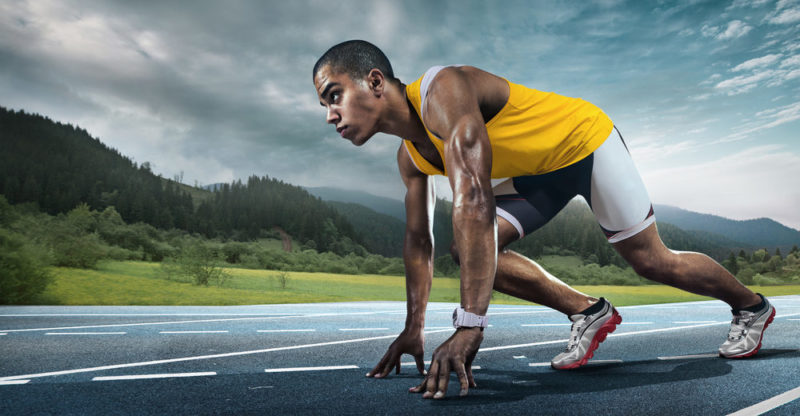Get Your Splits: “On the splits – in two weeks!” Such slogans are the sad reality of modern fitness, to which millions of people trust their health. Would you like to know how to correctly sit on the splits or just improve your stretching? If so, keep reading – perhaps it will keep you from making a fatal mistake and make the process as simple as creating a Hellspin login or cooking a meal you enjoy.
Being flexible doesn’t mean being able to sit on the splits! Flexibility is one of the five basic human physical qualities, along with speed, strength, endurance and agility. This is why we can conclude that it makes no sense to develop flexibility alone: we need a balance between all five qualities because it’s the balance that provides us with healthy movement and comfort in life.
All physical qualities influence each other. And if we consider flexibility in the meaning of “elasticity of tissues,” it’s safe to say that it affects strength, speed of movement, and dexterity. Moreover, it has long been proven that people with good stretching are less prone to injury, they are more active, and experience less discomfort and muscle pain. Finally, developed flexibility is beautiful; it gives an easy, graceful gait and graceful movements.
However, there are pitfalls to this topic! The healthy limits of flexibility are different for each person! And it’s necessary to take them into account, and not to try to reach the impossible, to keep up with the impressive results of gymnasts and ballerinas.
What Is Flexibility?
Many people mistakenly perceive flexibility solely as some “good extensibility” of muscles and ligaments. But in fact, it’s a broader concept.
Elasticity of Muscles, Ligaments, and Fascia
You can have great muscles, but you can’t get to them if there are problems at the level of fascial tissue, which is where everything in our body is packed, from small vessels and nerves to organs and muscles. The mobility of the fascia gives you the potential to stretch. Mobility depends on a number of parameters:
- Hydration levels (literally, how much water you drink).
- The balance of hormones (a wooden body that cannot stretch and unbend in any way can be the result of a hormonal imbalance, in this case only a doctor can help).
- Any surgeries, scars or even tattoos.
- The location of your internal organs.
- Stress level.
- Lifestyle, etc.
Mobility of the Spine and Joints
This component of flexibility is usually overlooked by both those who want to improve their stretching and those who train them. And it is in the joints that often lies the reason why a person can’t sit on the splits, no matter how hard he tries!
In the case of the split, for example, it’s necessary that the thighbone can fully rotate in the hip joint so that the ligaments and tendons around the joint capsule work smoothly and evenly. There must be sufficient rotation of the hip outward and inward, sufficient flexion and extension, and sufficient abduction and reduction. The average person who has been sitting-sitting and then suddenly decides to do stretching is likely to have an imbalance: something in excess (usually flexion) and something in short supply. This means a lack of full range of motion and a risk of injury on the spot!
Split Is a Trick, Not a Necessity
Although good stretching, of course, is not limited to the split alone, let’s examine the abilities of different people using this trick as an example – you’ll see how revealing it is.
Let’s look at the structure of the pelvic bones. These are the two pelvic halves, with the pubic bone in front, the sciatic tuberosities at the bottom, the sacrum and coccyx at the back, and the articular hollows where the thigh bones are “inserted” on the sides.
Obviously, the structure of the pelvic bones is different for different people. The individual characteristics of the hip bones determine which split is easier to sit on. So, there are people whose joint sockets are more sagittal. And these people can easily get a longitudinal splint. Then there are people whose joint sockets are more frontal. For these people, it’s easier to do a transverse split. For some people, both types of split will be easy.
Finally, there are those who will never ever in their lives because of the structure of their acetabular sockets. And you know what? It’s neither bad nor good, it’s just a given.
Being Flexible: Good Luck or a Problem?
Let’s talk about those for whom twine is not a problem. You’ve probably met people who bend in different directions like Elastica. The reason for such excessive flexibility usually lies not only in special training and the special structure of the joints, but also in dysplasia – the increased extensibility of connective tissue.
Doctors are still debating whether this peculiarity should be considered a malignant pathology or not. Perhaps it’s all about the fact that gutta-perfusion has its pros and cons.
Let’s start with the good:
- Flexible people are usually more graceful in appearance, have an easy gait and smooth movements.
- Guttapersonic children are happy to take gymnastics or dance classes.
- As they age, it’s easier for these people to maintain flexibility and mobility in their joints.
- Finally, dysplastic children can always surprise those around them with a couple of gymnastic tricks!
But let’s get to the cons:
- Dysplastic skin is prone to striae (stretch marks) and pigmentation.
- With dysplasia the joints are actually “loose”, there is a so-called hypermobility. Therefore, more often develop pain, dysfunction, dislocations and subluxations.
- Connective tissue is also involved in the construction of internal organs. Hence the increased risk of certain diseases, among them: myopia, mitral valve prolapse of the heart, prolapse of the kidneys, varicose veins.
- Dysplastic patients also have an increased risk of developing flat feet and other deformities of the feet and toes.
- Scoliosis, hyperlordosis, hernias and other pathological changes in the spine develop more frequently.
Dysplastic patients must necessarily engage in fitness, strengthen the muscles to support the hypermobile joints and spine. With dysplasia, it’s especially nice to do stretching. But the emphasis should still be on building a strong muscular frame, i.e. strength training and controlling movement in the joints! Special attention should be paid to the feet, back and pelvic floor muscles.




